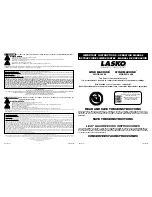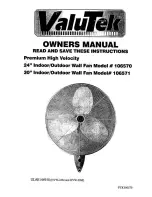
Translation from original instructions
Packaged Rooftop
34
We reserve the right to make changes without any prior notice.
UATYA
4P645202-1
The unit must be installed in an area from which any leaking refrigerant cannot flow into buildings or
cannot harm persons or damage property.
Similarly, should a refrigerant leak occur, the refrigerant must be prevented from flowing into fresh air
inlets, doors or similar openings, and it must be prevented from building up under any walking surface
and inside trap-doors.
any material exhausted from the safety valves must be conveyed using pipes in compliance with
the national and/or European directives: the exhaust point must not be close to trap-doors, manhole
covers and any other opening where refrigerant may be contained; Exhausted material must not be
conveyed close to fresh air inlets, doors or similar openings.
Exhausted material must not be conveyed close to ignition sources, as defined in standard EN378-2.
It is the responsibility of the installer to carry out a flammability risk assessment and a classification of
the danger zone at the site of installation, as required by standard EN378-3.
Where the existing local regulations are more stringent, these should be taken as reference.
5.3 Installation
The units are sent from the factory already tested and they need only the electrical, aeraulic and hydraulic connections
for installation.
The only unassembled component shipped is the rain guard for units that envisage air exchange and are therefore
equipped with external air damper.
5.3.1 External positioning
A solid base on which to position the unit must be created.
This base must be perfectly flat and horizontal. Its dimensions must be adequate for those of the unit.
The slab must be:
- made in a suitable foundation about 15-20 cm higher than the surrounding ground;
-
flat, horizontal and able to bear at least 4 times the operating weight of the unit;
- at least 30 cm longer and wider than the unit.
Although the units transmit low levels of vibration to the ground, it is advisable to lay a strip of hard rubber between
the base frame and the support surface.
If better isolation is required, it is advisable to use the anti-vibration mounts available as accessory.
In the event of installation on roofs or intermediate floors, the unit and pipes must be isolated from the walls and
ceilings. The units should not be positioned near private offices, bedrooms or areas where low sound emissions are
required.
It is also advisable not to install the units in narrow passages or small spaces, in order to avoid reverberations,
reflections, resonances and acoustic interactions with elements outside the unit.
Units equipped with standard coils (copper-aluminium) should not be installed in an environment where there is an
aggressive chemical atmosphere, in order to avoid the risk of corrosion.
Particular attention should be given to atmospheres containing sodium chloride, which worsen corrosion due to
galvanic currents; a unit with untreated coils must absolutely not be installed in a marine environment.
For installations in marine environments, in the vicinity of animal farms or in heavily polluting industrial areas, it is
necessary to order coils with anticorrosive surface treatments.
In any case, please contact our sales department to define the most suitable solution.
Summary of Contents for FC2
Page 2: ......
Page 55: ......
Page 56: ...Copyright 2020 Daikin 4P645202 1 UM_DKN_0001_Rooftop_EN_17 12 2020_rev00 ...
















































